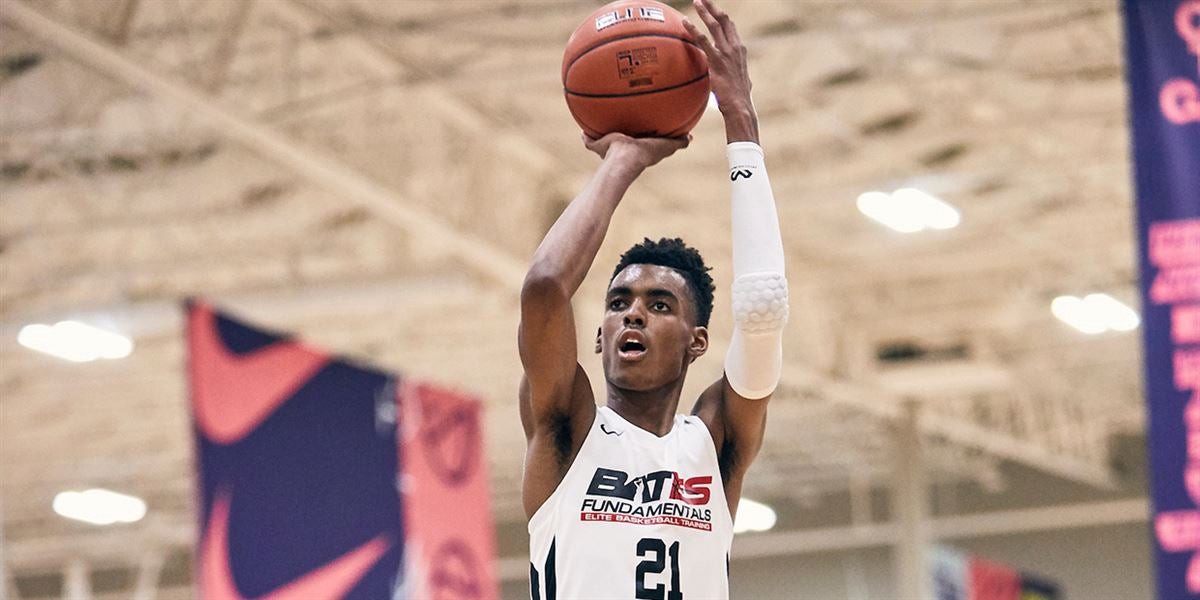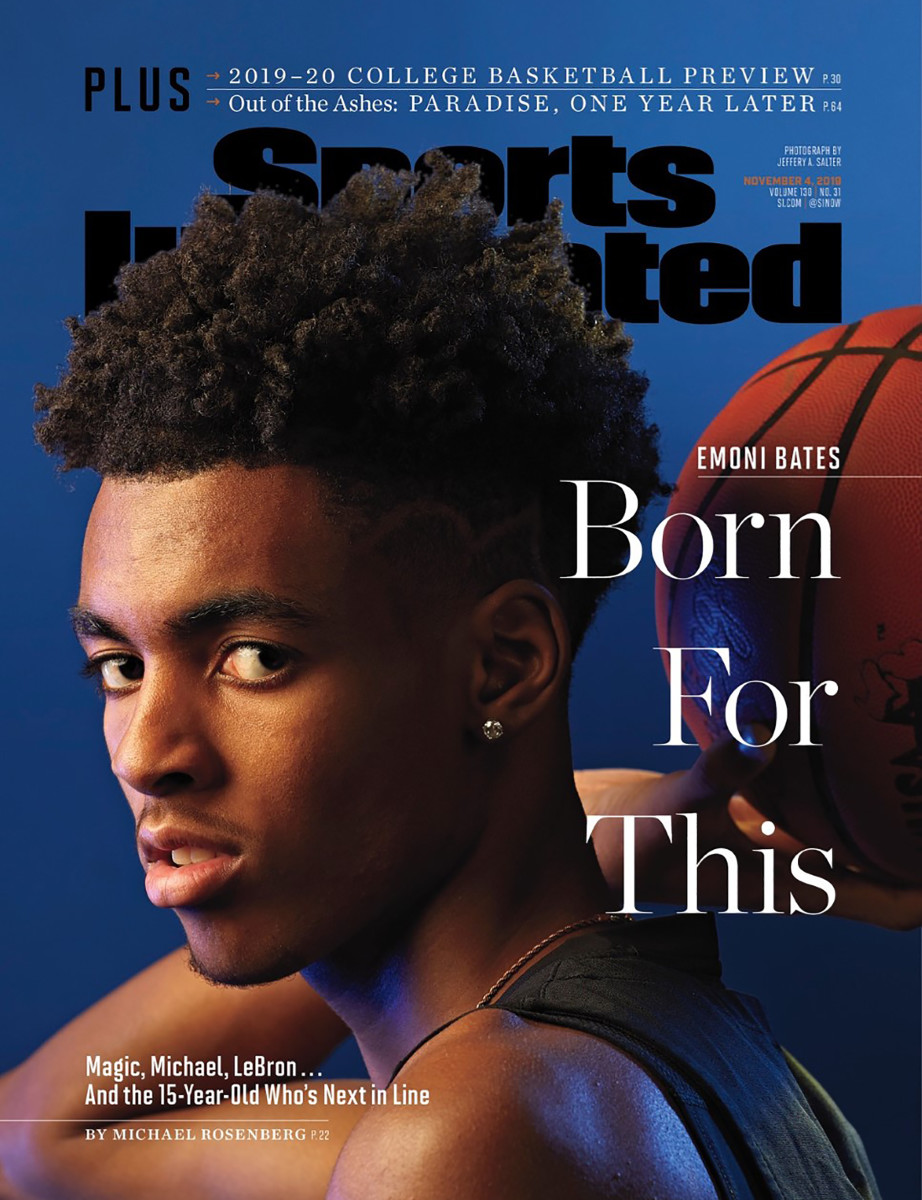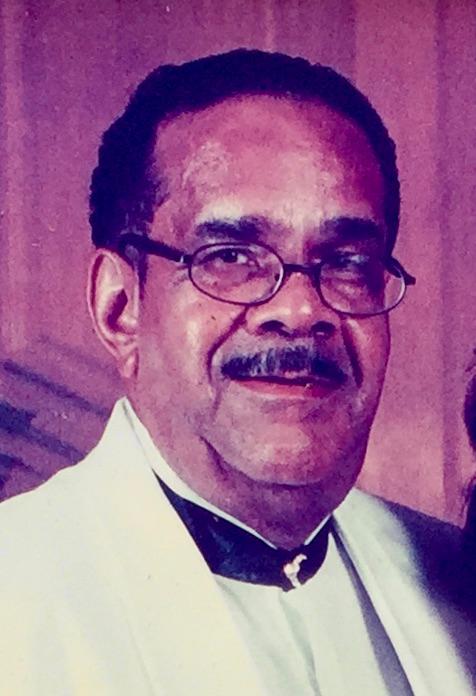
He should not be on the cover of Sports Illustrated. You should not be reading about him. He is slipping out of his bi-level house in a Ypsilanti, Mich., subdivision in the morning darkness, wearing a hoodie and holding a fork and a plate of waffles and eggs, just a teenager who snagged a few extra minutes of sleep. He climbs into the passenger seat of his father’s Ford Expedition, because he isn’t old enough to drive himself to school yet. It’s another mundane day in the life of a sophomore high school basketball player, except this one has a goal: “To try to be the best player—ever.”
Magic, Michael, LeBron . . . Emoni? Well, kids are supposed to dream. Don’t hold it against him. But one assistant at a college superpower, when asked about Emoni Bates, says simply, “He is the best player I’ve ever seen. You have to see it to believe it.” A college head coach laughs and agrees.
In basketball, every great player evokes memories of another. Emoni is 6′ 9″ with long arms, minimalist biceps and a shooting stroke that’s purer than a country sunset, so people inevitably compare him to Kevin Durant. This sounds crazy. It is not crazy. An NBA scouting director calls the Durant analogy “obvious . . . the shooting is remarkable. He has a chance to be really special.” One coach who recruited KD calls Emoni “the same level shooter” but “a much better ballhandler” than Durant at that age.
Fifteen years old. This isn’t fair. Let him be a kid. But he can’t be. Emoni noticed last year that no matter where he went in Ypsilanti, heads turned. By the end of his freshman season at Lincoln High, the school gym was overflowing for games, and that was before he hit two buzzer beaters in postseason games and led the team to the Division I state championship. Hundreds of fans were sitting on the floor. The hottest ticket in town had caused a fire hazard. This year, Lincoln will play at least five games in the 8,800-seat arena at nearby Eastern Michigan.
It is all too much, too soon but . . . what if it isn’t? What if he is the rare teenager who knows what he wants, and knows he can handle it? Emoni Bates has a chance to be a generational player for reasons beyond his skill or athleticism. Several people in the sport use two words when describing him: Kobe mentality.
Emoni has always had that. When he was five, he participated in layup lines at a pro-am game; after tipoff, little Emoni was pissed he wasn’t allowed to play. By the time he entered middle school he had a collegian’s work ethic. He takes incidental bumps as intentional, and if they are intentional, Emoni goes full E-mamba. Last year a kid forgot to box him out on a free throw. Big mistake. Emoni dunked his own miss. The kid shoved him to the ground in frustration. Bates popped up, eyes raging and fist cocked. He didn’t throw a punch, but he sure wasn’t going to just walk away.
He is quiet around strangers, goofy with friends—and an assassin with a ball in his hands. At one recent workout, his first after taking two weeks off on his father E.J.’s orders, he made more threes than he missed, but he was still disappointed. He cursed himself repeatedly. He kicked a ball into the stands. E.J. tried to calm him down, but Emoni yelled with disgust, “I shouldn’t be f—— missing!” But the outbursts did not derail him; they helped him refocus. He finished by making at least 30 straight high school threes. Then he sat down next to a visitor and said he was sorry he didn’t have a better day.
Put him on any Division I college team and he could start. And yet he has only five scholarship offers. Most big schools aren’t recruiting him because they assume that by 2022, the NBA collective bargaining agreement will allow high schoolers to enter the league, and Emoni will leave Lincoln to be the No. 1 pick.
One NBA front-office rep says that on Emoni’s best day he could hold his own at an NBA practice right now: “It’s nuts.” The Durant comparison is “very realistic.” But there are days when he looks 15 . . . which, of course he is.
Emoni puts his plate on the floor of the Expedition’s backseat, gets out of the car and walks to class.
First Hour: Algebra
Math has always been Emoni’s favorite class. He likes it because the subject has always come naturally to him, and he has had great teachers who made it fun. Anyway, this can’t be bad. Sports are a numbers-driven enterprise.
A year ago, before he had played a high school game, Emoni sat on his couch and asked his father for LeBron James’s stats as a freshman. E.J. looked them up: 18.0 points, 6.2 rebounds and 3.6 assists per game at St. Vincent–St. Mary in Akron, Ohio. Emoni vowed to do better. Then he averaged 28.6 points, 10.1 rebounds and 1.9 assists.
Those numbers don’t mean he is better than LeBron. But the story tells you something about the kid. He has studied the King James bible but does not take it as gospel. He has talked to James. He has connected with Durant on Instagram. He says getting to know the biggest basketball stars in the world feels “normal.”
E.J., who grew up in nearby Milan, played at Kentucky Wesleyan and runs the Bates Fundamentals AAU program, has seen and coached enough players to know how good his kid is. He agreed to this cover shoot because he figures the attention is coming, so Emoni might as well deal with it. Edith Bates, a UPS logistics supervisor, has a mother’s worry about her younger son. “I don’t want this to be a thing where the exposure is bad for him.” Emoni says he wanted to do the shoot for a different reason. James famously appeared on SI’s cover as a high school junior. Emoni is a sophomore. He got here faster.
Second Hour: Spanish
Basketball was invented in the U.S., and most of the best players in history were born here, but the modern game was shaped by two weeks in Spain.
Surely you remember the 1992 U.S. Olympic Dream Team sweeping through Barcelona. Surely you do not remember the host country’s team. The Spaniards did not make the medal round. They lost 122–81 to the Americans. They also lost to Angola. But when the U.S. team sprinkled its genius on those Olympics, the rest of the world watched, learned and vowed to catch up. Nobody soaked up the lessons faster than Spain, which is now the reigning world champion.
What does this teach us about Emoni Bates? Take notes, kids: There was a widely held belief in 1992 that if Europeans wanted to make the NBA, they would have to adjust to a more physical game. What happened was the opposite: Americans adopted the European style. Traditional back-to-the basket centers are an endangered species. Even the tallest players are supposed to have three-point range.
Emoni Bates is unlike previous stars because he grew up in this era. For a hundred years, tall players learned the game from the inside out: post moves first, followed by mid-range shots, then attempts from farther if they could handle it. Bates learned from the outside in.
When he was in second grade he was a head taller than his classmates, but he was already draining threes. He was crossing opponents over at eight. Coaches talk about positionless basketball; Bates has never had a position. He dribbles, he passes, he scores from anywhere on the floor. He always has.
Third Hour: Chemistry
This is a delicate science, growing a superstar. Mix in too much of the wrong ingredient—fame, pressure, drugs, hangers-on, burnout, ego—and an explosion could result. Yes, LeBron was hailed as a once-in-a generation prospect. So was Greg Oden. So was Lloyd Daniels.
“He can figure out the basketball part,” E.J. says. “That’s easy. That’s not the part I worry about.”
This is why E.J. keeps his hands on every beaker and set of tongs. The Bateses chose Lincoln High largely because E.J. has known coach Jesse Davis since they were teammates at Grand Rapids Community College almost 30 years ago. Darryl Hudson, Emoni’s skill-development coach, has tutored him for 10 years. Ryan Sidney, who has also worked with Emoni, babysat him when he was one. They aced the auditions before they even knew they were trying out. Anybody who shows up now has to earn E.J.’s trust.
Emoni has rebuffed more invitations from USA Basketball than he has accepted. He will not fly across the country to feast on inferior competition for a dash of prestige. He would rather stay home and improve his game or rest. E.J. says his biggest fear with Emoni is “overkill.”
Emoni’s dominance brings challenges. How do you teach a kid to make the right basketball play when the best option for his team is always that he shoot? E.J. is trying to limit Emoni’s time in the post, because he does not want him to be too efficient. He does not want him to get bored.
Davis says Emoni “probably would have been the best scorer on our [varsity] team when he was in the seventh grade.” But in basketball, the fast lane gets crowded. In seventh grade Emoni signed his first autograph, for a little kid, and got his first D-I offer, from DePaul. He was already so good that he was not surprised by either. But too much exposure can mess with the chemistry experiment. “It’s like having a performance review at work every single day,” Edith says. “Who signs up for that?”
The easy solution is to let him be a typical kid, but people take advantage of typical kids. E.J. is extremely conscious of being a father, a coach and the CEO of startup that should be worth nine figures someday. Emoni is not just a product of this era of basketball. He is a product of this era of the business of basketball. He identifies at least as much with his dad’s AAU program as his high school team; he is in his Nike-sponsored Bates Fundamentals jersey on the cover because that is what he wanted to wear. He has played more ball for Bates than for Lincoln. The NBA franchise that lands Emoni should be forewarned: It will have to earn the Bates’s trust, too.
“You want to make sure you’re the landlord, not the tenant,” E.J. says. “Sometimes [players] just go with the flow, not really setting themselves up for generational wealth. If he is in that position, I want to make sure he is in control with everything he does.”
Fourth Hour: Literature
These superstar stories are all novels, aren’t they? Kid gets left off the varsity at Laney High in Wilmington, N.C., uses it as fuel, becomes the most famous athlete in the world. Man-child from Philly towers over every-body, gets tabbed the Stilt and the Big Dipper, and scores 100 points in a single NBA game, but is remembered largely for the times he lost. Boy grows up in Akron, Ohio, never knows his dad, gets drafted by his hometown team, leaves it, then returns to end the city’s championship drought.
The Emoni Bates story may read like a novel someday. Right now, it feels like a comic book. He is Spider-Man: Something bit him at a young age, stretched his limbs and turned him into an angry, supernatural hoops phenomenon.
There were early signs he was not like the rest of us. When he was four, Edith worried she would lose him in the wave pool at Rolling Hills County Park, but Emoni instinctively understood how to get his head back above water while avoiding the inner tubes. He had never taken swimming lessons. The first time he put on ice skates, at a birthday party when he was nine, he just stepped on the ice and took off. He never lost his balance.
Sit down with him, and he is a sweet kid, talking so fast and softly you might miss a word or two. After one AAU game last year he fell asleep in his mother’s lap. Try to guard him, though, and he transforms. He is Emoni Bates off the court and Norman Bates on it.
At 185 pounds he is impossibly skinny but craves contact. He will match you elbow for elbow, dagger for dagger. He says Jordan is the best player ever, not just because of rings or points but because the NBA was nasty back then: two-armed fouls, clotheslines, the occasional brawl. The two guys he would love to meet are Bryant and Allen Iverson. They were not the two best players, but they were the ones who thirsted for blood, and this is how Emoni plays.
E.J.: “It’s an alter ego. There is no name for it.”
Emoni, smiling: “Somebody will come up with one and I’m going to like it.”
Fifth Hour: Lunch
Emoni knows he should gain weight; how many people wear size 14 shoes and have a 32-inch waist? He says, “I like to eat. I just don’t eat as much as I should.” His favorite meal is baked chicken with rice and cream-of-mushroom gravy. He loves chicken fingers, hamburgers and fries, cookies. It doesn’t matter. He burns so many calories that he can’t possibly consume enough to make up for it.
Eventually Emoni’s metabolism will slow, strength training will take hold and protein shakes will become a staple. For now, he eats like a typical teenager. Lunch? Turkey with mayo. String cheese. Chili Cheese Fritos. His dad packed it.
Sixth Hour: History
“I don’t like history,” he says. “It’s boring. It’s long, too.”
O.K. But just a drop, please: Shaquille O’Neal played three years of college ball. Tim Duncan played four. James didn’t play any. These days, the best players are, of course, collegiate one-and-dones. And Bates is widely expected to be the poster man-child of the next era.
There are good reasons for this. Everything Bates does is projectable. There just aren’t that many 6′ 9″ players in the world who can shoot as well as he does. Most of the ones who can don’t have his athleticism.
This is why most college coaches have not bothered to call. Duke, the era’s dominant recruiting power, has barely shown interest. Emoni understands the reasoning, but he is still miffed. He says, “I never said nothing about me going to college for a year or going straight to the NBA.”
Maybe the coaches are right. But here is some more history: When Emoni was in eighth grade, he skipped the Clague Middle School basketball season. He was too good for it. His mom says, “It wasn’t even fair. He was dunking on everyone. It wasn’t challenging enough for him.”
Bates could play three more years at Lincoln, play all his senior-year games at EMU and then go pro. He could sign with Nike in a year, end his high school playing career and wait for the 2022 draft. And there is a real chance that he reclassifies, finishes high school in three years, plays one year of college ball and then becomes the No. 1 pick in the draft.
Seventh Hour: Art
Basketball at the highest level is not just a game. It is a form of self-expression. Personalities are revealed through creative passes, ferocious drives or fear of the big shot. Michael Jordan wanted to rule the world. LeBron James wants his buddies involved, but he wants to be in control. Tim Duncan played like Tim Duncan.
Thanks to modern technology, Emoni Bates can easily study basketball art history. He admires elements from each of the greats. Kobe? “Relentless.” Durant? “Scoring machine.” Steph Curry? “Using screens.” For all the Durant comparisons, Bates often resembles a 6′ 9″ Curry: exceptional deep range, superquick dribble.
Every Emoni game features a few distinctive brushstrokes to make hoops aficionados swoon. When he dribbles at the top of the key, the ball rarely goes above his knees. His crossover is obscene. During one Lincoln game last year, he missed a three-pointer, grabbed the rebound and threw it down. Another time, he bobbled an alley-oop, hung on the rim with his right hand, caught the ball with his left, and lobbed it in for a swish. It was preposterous. It was also obvious goaltending. The great ones draw outside the lines.
He is learning a skyhook, which slow centers don’t even use anymore; when he lifts his right knee, reaches up and drops the ball in the bucket, he looks as if he has watched Kareem Abdul-Jabbar his whole life. See Bates enough, and you may laugh at the absurdity of his skills. While he waited for an SI photographer to set up this cover shoot, he hit 22 straight three-pointers from the top of the key. During another workout, he made 255 out of 365 threes, or 69.9%. Catch-and-shoot, off the dribble, NBA range: It doesn’t matter. If his three-point percentage in a workout drops below 50%, he is probably shooting lefthanded. Seriously. He expects to launch lefty threes in a game soon. E.J. says, “Why not let them think you’re ambidextrous?”
Emoni’s two favorite parts of basketball are scoring and scoring a lot. He did a 360-degree dunk recently, and he is working on a windmill, but most of his jams are angry. He lives to bury threes in defenders’ faces. He says he does not love playing defense, but he is so long, athletic and competitive that he will probably become great at it. His goal this year is to be a better teammate. Enjoy the show, Ypsilanti. It won’t be yours for long.











